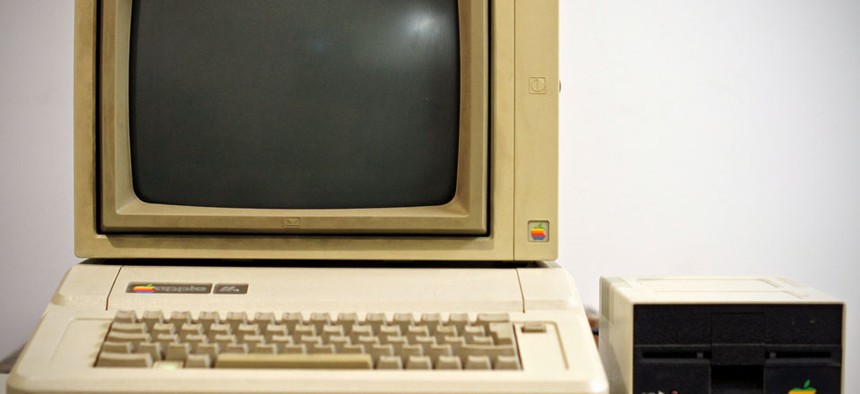Remember ‘Computerphobia?’ When People Feared PCs

Flicke user Daniel Bagel
When the machine became ubiquitous in homes across America, a new kind of anxiety captivated consumers.
In the early 1980s, the age of the personal computer had arrived and "computerphobia" was suddenly everywhere. Sufferers experienced "a range of resistances, fears, anxieties, and hostilities," according to the 1996 book Women and Computers. "These can take such forms as fear of physically touching the computer or of damaging it and what's inside it, a reluctance to read or talk about computers, feeling threatened by those who do know something about them, feeling that you can be replaced by a machine, become a slave to it, or feeling aggressive towards computers."
Humans often converge around massive technological shifts—around any change, really—with a flurry of anxieties. In the early days of the telephone, people wondered if the machines might be used to communicate with the dead. Today, it is the smartphone that has people jittery. (Are iPhones making us stupid? Lazy? Narcissistic? Anti-social?)
Three decades ago, "Computerphobia" came up in magazines, newspapers, computer training manuals, psychology studies, and advertising copy.
"Who knows, maybe even the most dedicated computerphobes in your company will warm up to the PC after this," copywriters offered in a 1986 ad for IBM's Gem software—an interface designed for those who might be intimidated by the more complicated command-driven DOS operating system.
Here's how Google tracks mentions of "computerphobia" in books over a 65-year period:
What some people didn't yet understand in the 1980s was that learning to use a computer was "much more like taking up a musical instrument than following instructions how to use an electrical appliance, such as a toaster," wrote Paul Strassmann in his 1985 book, Information Payoff. (Toasters come up surprisingly often in early coverage of personal computers: "Computers won't make toast or vacuum a carpet," wrote the author of a 1983 Personal Computing cover story about computerphobia.)
The same article identified subsets of anxieties that contribute to the phobia: fear of breaking the computer, fear of losing power, fear of looking stupid, and fear of lacking control.
"Perhaps we're led to believe that anyone who doesn't have a keen interest in and desire to use a personal computer must be sick," Personal Computing's Charles Rubin wrote.
Several publications devoted coverage to computerphobia, and offered tips for how to treat it.
"The most important thing to remember about computerphobia is that it's a natural reaction to something unfamiliar," Rubin wrote. "If you're trying to use a personal computer or are considering using one, remember: Allow yourself to be a little ignorant for a while. Plan to spend some time learning; give the computer a chance to prove itself before you decide you can't use it; take things a step at a time; make sure you read the documentation carefully; and finally, don't forget that you're in charge, not the computer."
In 1985, The New York Times suggested watching computer tutorial videos on television—a less threatening screen than a computer monitor for those who were used to TV but new to computing. ("And unlike the more common floppy-only interactive computer programs, these, with their familiar video images accompanying the lessons, help to make personal computing comfortably commonplace," the Times wrote.)
For others, computerphobia wasn't as much about fear as it was about apathy. Word processors weren't really scary but boring, New York magazine wrote in 1986.
"If the new word processors are being offered as an antidote to computerphobia... the companies introducing them forgot one major ingredient—fun... They are like children's klutzy training bikes in a world full of sexy Japanese racing cycles."
"Computerphobia" didn't fall out of fashion until the 1990s, when a new realm of technological anxiety became the target: cyberspace. Another word that today sounds impossibly old-fashioned, but in its earliest utterances was futuristic enough for some people to seem frightening.


